Sitemap
A list of all the posts and pages found on the site. For you robots out there is an XML version available for digesting as well.
Pages
Posts
Future Blog Post
Published:
This post will show up by default. To disable scheduling of future posts, edit config.yml and set future: false.
Blog Post number 4
Published:
This is a sample blog post. Lorem ipsum I can’t remember the rest of lorem ipsum and don’t have an internet connection right now. Testing testing testing this blog post. Blog posts are cool.
Blog Post number 3
Published:
This is a sample blog post. Lorem ipsum I can’t remember the rest of lorem ipsum and don’t have an internet connection right now. Testing testing testing this blog post. Blog posts are cool.
Blog Post number 2
Published:
This is a sample blog post. Lorem ipsum I can’t remember the rest of lorem ipsum and don’t have an internet connection right now. Testing testing testing this blog post. Blog posts are cool.
Blog Post number 1
Published:
This is a sample blog post. Lorem ipsum I can’t remember the rest of lorem ipsum and don’t have an internet connection right now. Testing testing testing this blog post. Blog posts are cool.
publications
Predicting the impact of formation protocols on battery lifetime immediately after manufacturing
Published in Joule, 2021
A. Weng, Peyman Mohtat, Peter M. Attia, Valentin Sulzer, Suhak Lee, Greg Less, Anna Stefanopoulou
We identify a scalable method for predicting the effect of new formation protocols on cycle life. The method is obtained directly at the end of the manufacturing line and can be deployed immediately in mass production settings to improve diagnostics of new formation protocols.
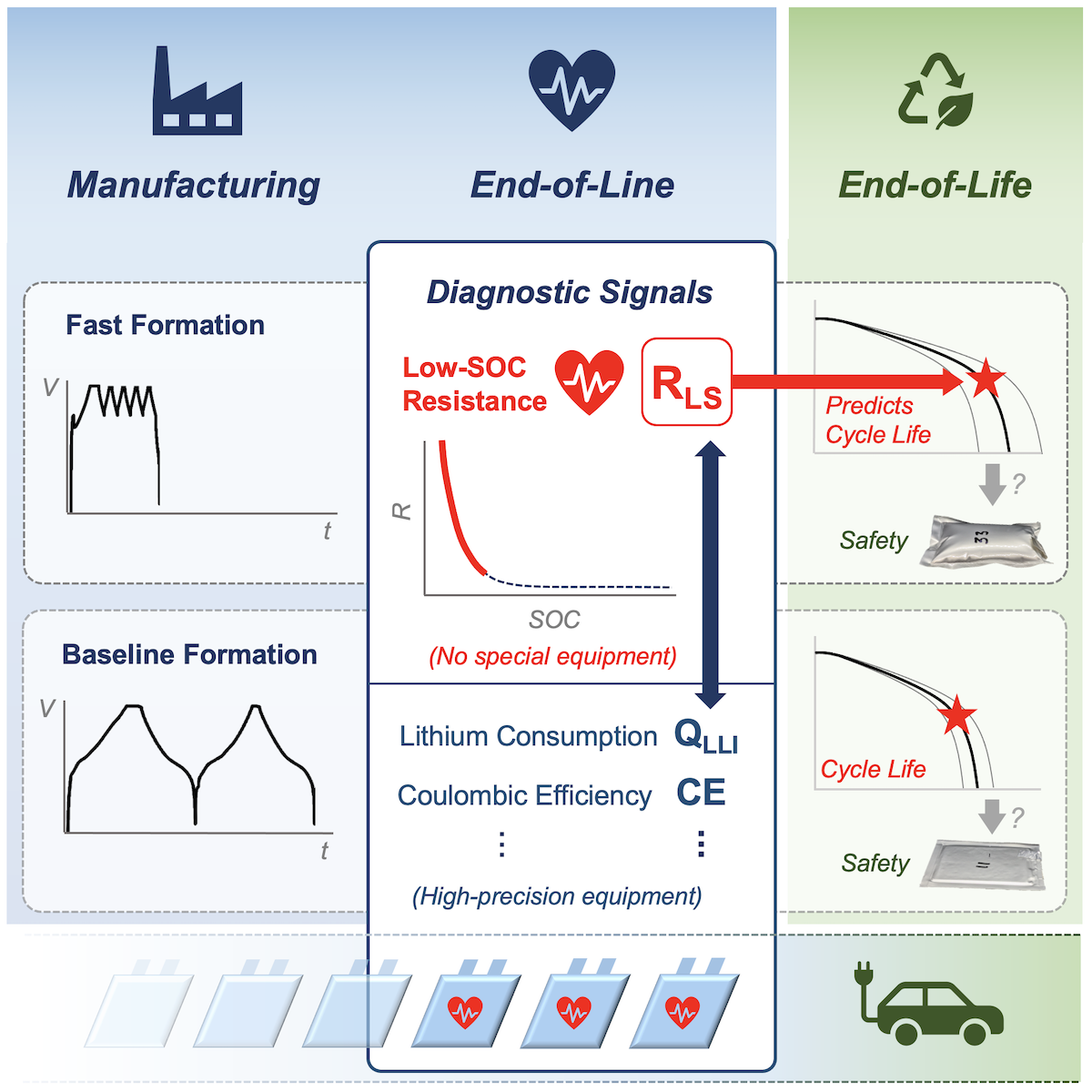
Differential voltage analysis for battery manufacturing process control
Published in Frontiers in Energy Research, 2023
A. Weng, Jason B. Siegel, Anna Stefanopoulou
We present a method for collecting and analyzing full cell near-equilibrium voltage curves for end-of-line manufacturing process control. The method builds on existing literature on differential voltage analysis (DVA or dV/dQ) by expanding the method formalism through the lens of reproducibility, interpretability, and automation. Our model revisions introduce several new derived metrics relevant to manufacturing process control, including lithium consumed during formation and the practical negative-to-positive ratio, which complement standard metrics such as positive and negative electrode capacities. To facilitate method reproducibility, we reformulate the model to account for the “inaccessible lithium problem” which quantifies the numerical differences between modeled versus true values for electrode capacities and stoichiometries. We finally outline key data collection considerations, including C-rate and charging direction for both full cell and half cell datasets, which may impact method reproducibility. This work highlights the opportunities for leveraging voltage-based electrochemical metrics for online battery manufacturing process control.
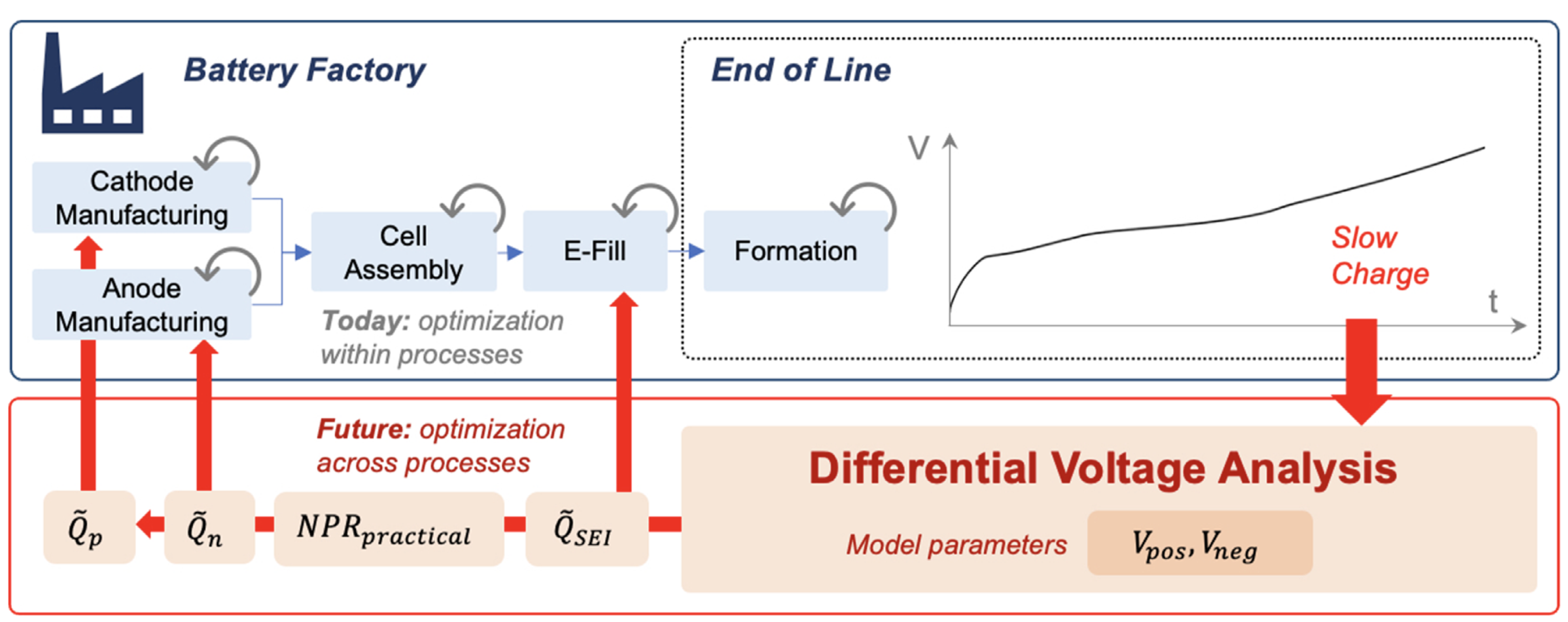
Modeling battery formation: boosted SEI growth, multi-species reactions, and irreversible expansion
Published in Journal of the Electrochemical Society, 2023
A. Weng, Everardo Olide, Iaroslav Kovalchuk, Jason B. Siegel, Anna Stefanopoulou
This work bridges the gap between electrochemical descriptions of SEI growth and applications toward improving industrial battery manufacturing process control where battery formation is an essential but time-consuming final step. We envision that the formation model can be used to predict the impact of formation protocols and electrolyte systems on SEI passivation and resulting battery lifetime.
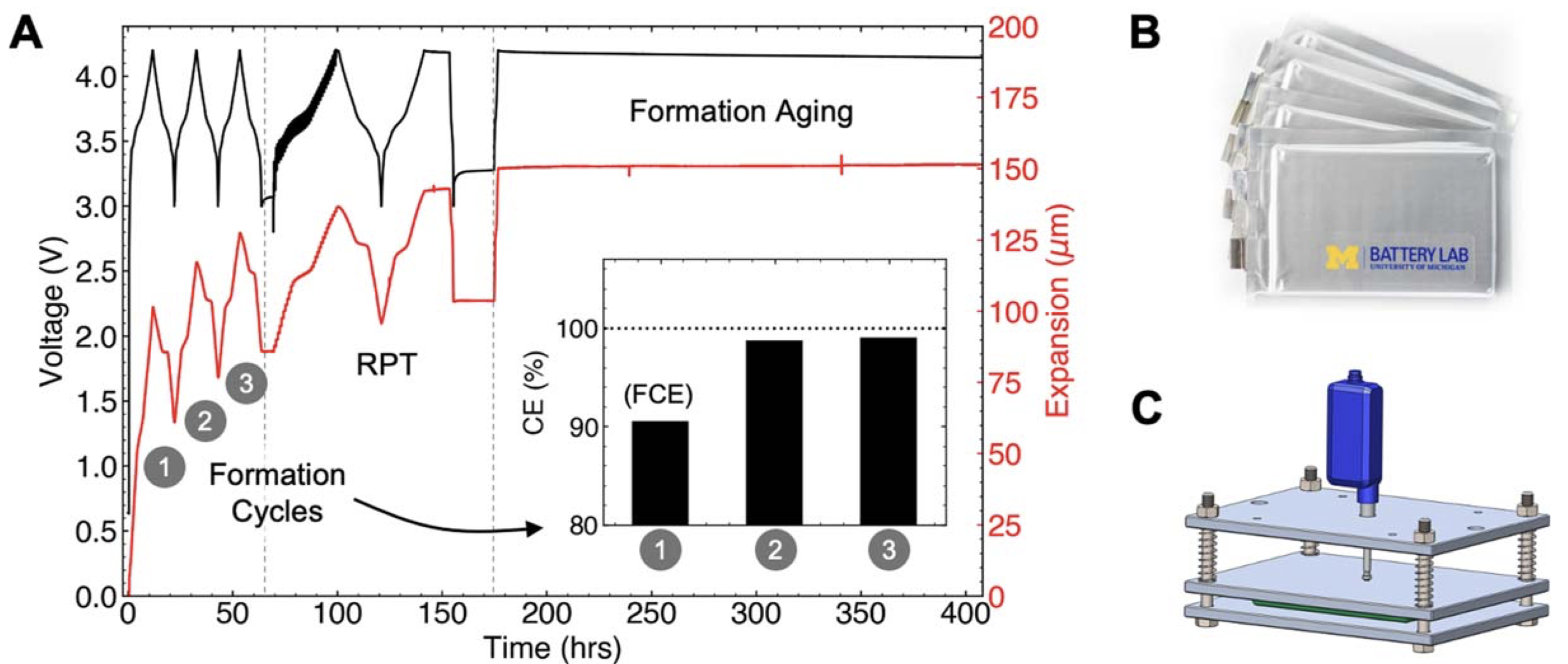
Battery passports for promoting electric vehicle resale and repurposing
Published in Joule (Commentary), 2024
A. Weng, Eric Dufek, Anna Stefanopoulou
We highlight the central role that the battery management system (BMS) plays in enabling battery passports to predict remaining useful life (RUL). With an accurate BMS, battery passports can help boost consumer confidence in the used electric vehicle market. With an accurate, physics-based BMS, repurposers can evaluate second-life application feasibility and fulfill the promise of a circular battery economy.
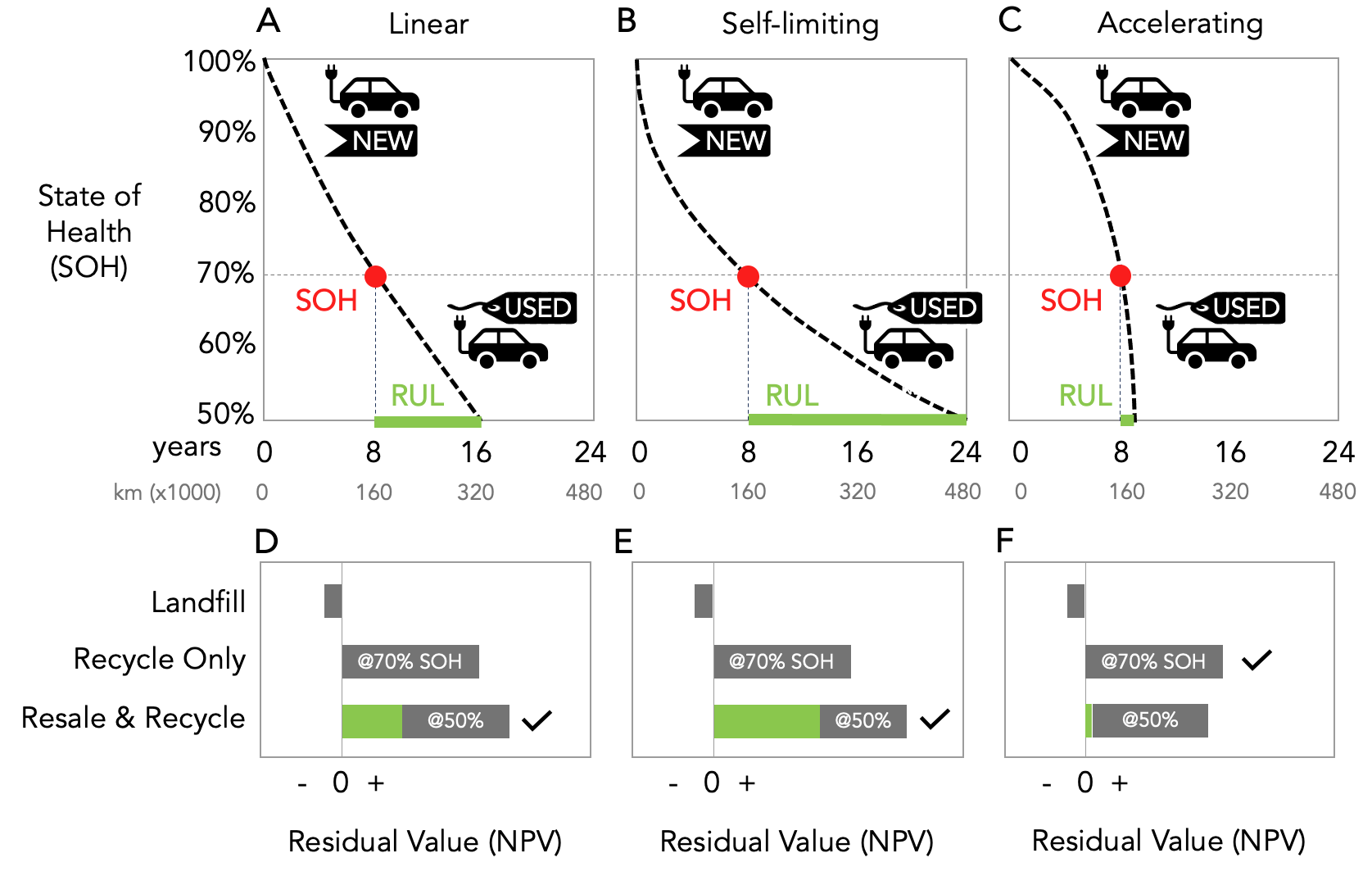
Current imbalance in dissimilar parallel-connected batteries and the fate of degradation convergence
Published in Journal of Dynamic Systems, Measurement, and Control, 2024
A. Weng, Hamidreza Movahedi, Clement Wong, Jason B. Siegel, Anna Stefanopoulou
We propose an analytical framework describing how initial capacity and resistance variability in parallel-connected battery cells may inflict additional variability or reduce variability while the cells age. Using this framework, we demonstrate that current imbalance can cause convergent degradation trajectories, consistent with previous reports. However, we also demonstrate that different degradation assumptions, such as those associated with SOC imbalance, may cause divergent degradation. We finally highlight the role of different cell chemistries, including different OCV function nonlinearities, on system behavior, and derive analytical bounds on the SOC imbalance using Lyapunov analysis.
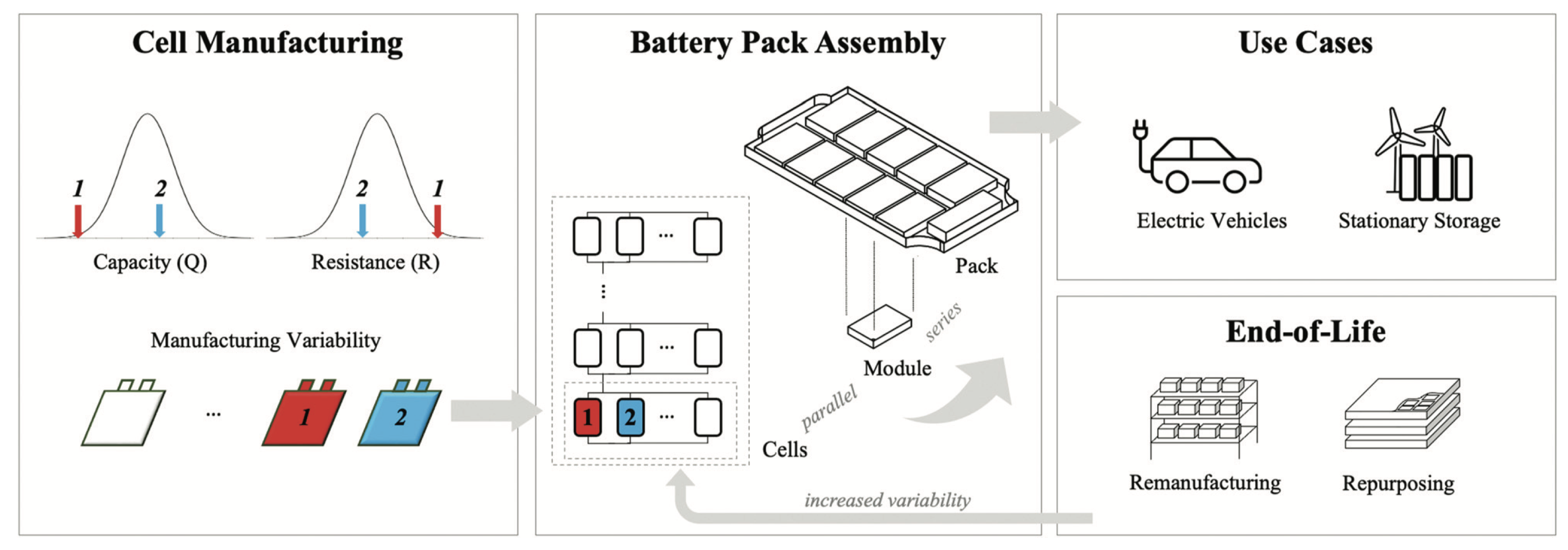
Higher labor intensity in US automotive assembly plants after transitioning to electric vehicles
Published in Nature Communications, 2024
A. Weng*, Omar Y. Ahmed*, Gabriel Ehrlich, Anna Stefanopoulou (* : equal contribution)
We find that U.S. vehicle assembly plants that have fully transitioned from gas engine to electric vehicle assembly have required higher labor intensity. It suggests that more, not fewer, workers are needed for electric vehicle assembly.
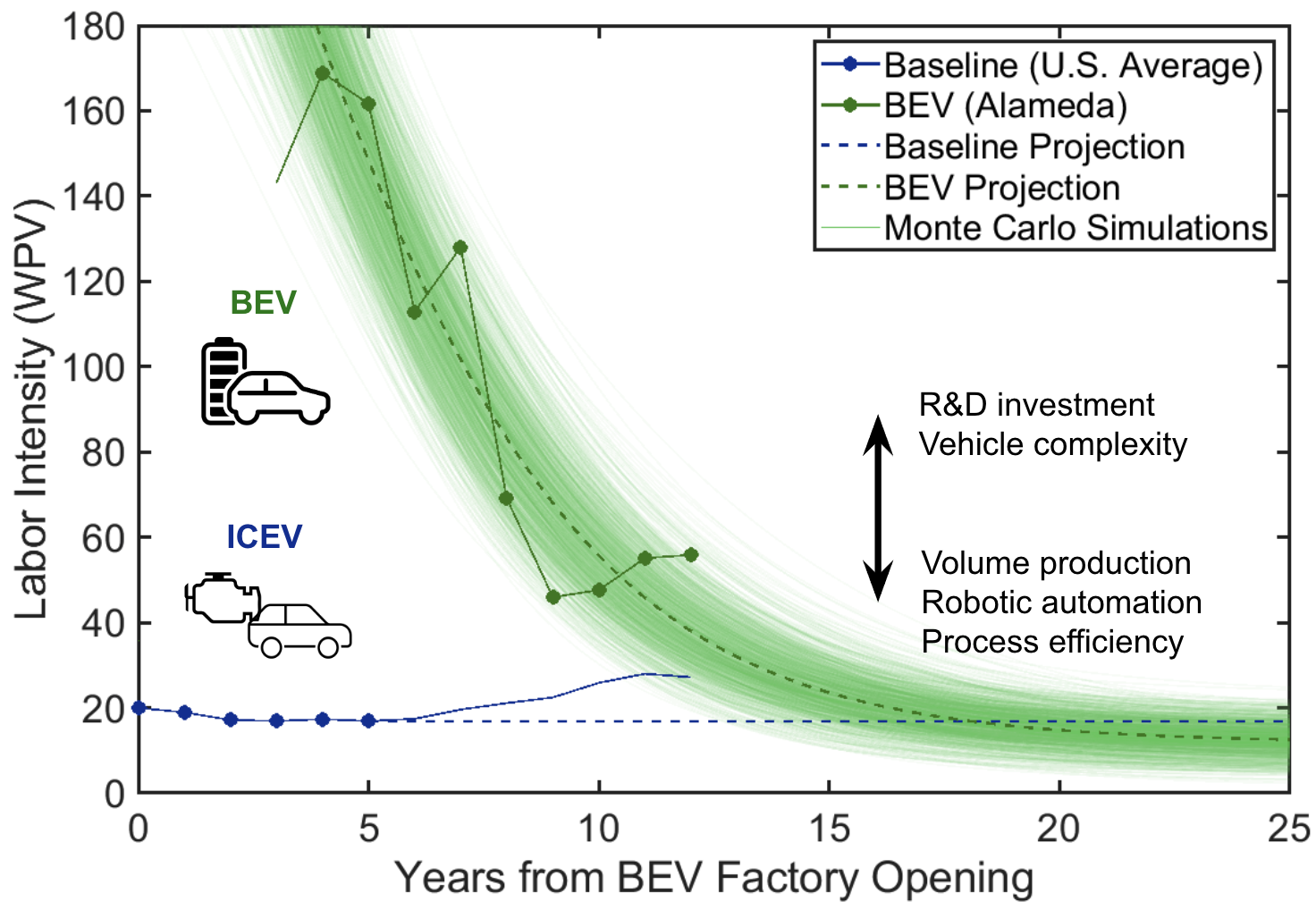
talks
Talk 1 on Relevant Topic in Your Field
Published:
This is a description of your talk, which is a markdown files that can be all markdown-ified like any other post. Yay markdown!
Conference Proceeding talk 3 on Relevant Topic in Your Field
Published:
This is a description of your conference proceedings talk, note the different field in type. You can put anything in this field.
teaching
Teaching experience 1
Undergraduate course, University 1, Department, 2014
This is a description of a teaching experience. You can use markdown like any other post.
Teaching experience 2
Workshop, University 1, Department, 2015
This is a description of a teaching experience. You can use markdown like any other post.
